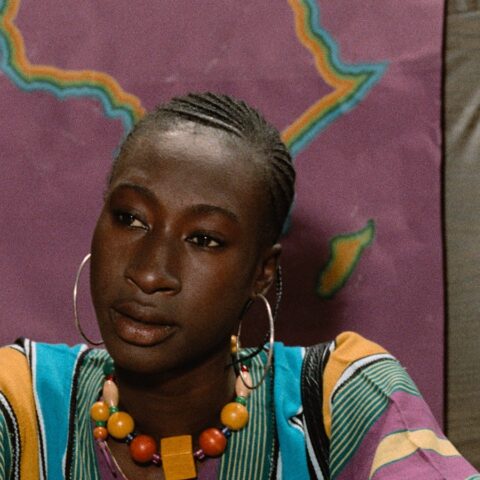By NewsdeskFriday, November 23, 2012.It’s
not true that Britain’s ethnic minorities don’t spend, behave the same
as whites and are too hard to target. This is according to the latest
findings of advertising trade body, the IPA, whose recently published
study on ethnic diversity examines the rapidly expanding multicultural
landscape of the UK, and highlights common misconceptions. Based
on a compilation of academic and third-party research over the last
five years, including the first findings of the ONS Census, as well as
interviews, case studies and contributory chapters from ad agency heads,
2012 Multicultural Britain examines
the growing influence of the black and ethnic minority (BME)
population. They now account for 12 per cent of the whole; their
purchasing power is £300 billion and rising; mixed race Britons are
becoming the fastest growing ethnic category in the UK; and the average
British Indian man is now on a higher income than his white British
counterpart. The
report includes updated research conducted by Clearcast that found only
one in twenty ads made in 2011 featured ethnic minority actors,
although the cuts in public sector advertising and the winding up of the
Government’s Central Office of Information (COI) was a big contributory
factor. Yet ethnic media has yet to make consistent inroads into
mainstream marketing strategies. However there are signs that businesses
and the marketing industry are starting to take notice as the report
cites examples including TK Maxx launching a range of gift cards to tie
in with the Hindu festival of Diwali after discovering that over one in
five of their customers were Asian, or Swarovski who launched a range of
crystals designed specifically to be worn with the abbaya cloaks on
Middle Eastern women. Says
Saad Saraf, Founder and CEO of Mediareach and Chairman of the IPA
Ethnic Diversity Forum and IPA Council: ‘We want this report to
highlight what makes ethnic minority consumers such an interesting
market. We are gradually seeing a cultural change in terms of
recruitment and portrayal which I find encouraging, as is the IPA
programme to monitor ethnic representation in the industry and attract
talent from people regardless of their ethnic or educational background.
However this is still much more to be done and this report helps to
make a strong case for marketers to take ethnic minority consumers more
seriously.” The
report authors believe that talk of a ‘brown pound’ has helped raised
awareness but that the term can obscure more than it clarifies. As
ethnic minorities do have different spending patterns and consumer needs
from their white counterparts there is still the need to embrace
different ethnic pounds. Says Debarshi Pandit, head of OMG Ethnic: “A
good chunk of second-or-third generation ethnic minorities who are well
integrated into British society, still want a link to their ‘own’
culture.” The
report gives key facts on today’s ethnic minorities, offers advice and
opportunities for marketers going forwards, and how to reach them. Highlights include: ·
By 2016 half of the (BME) population will be under the age of
12 whereas half of the white population will be under 40.· By 2051 England and Wales will be as diverse as London is now.· Indian households are most likely to own multiple cars or vans with 80% owning at least one.· Half of Bangladeshis live in households with four or more people.· South Asian and African Caribbeans still represent the largest ethnic groups.· Black British women spend six times more on hair products than their white counterparts.· Britain’s ethnic minorities make up 7% of all car owners and are three times more likely to own a BMW.· Britain’s ethnic minorities are more likely to be early adopters of, and spend proportionally more on, new technology.·
Food and non-alcoholic drink has become the third spending
priority for mixed Asian and black groups. ‘Ethnic’ food is a growing
market in the UK, accounting for more than half of the market share in
Europe. And on the media landscape:·
Lack of accountability – ethnic media is underrepresented in
mainstream desktop research with audiences understated by main industry
measurement platforms such as RAJAR and BARB.· Ethnic media is evolving and splintering into different segments.·
Digital switchover has led to the number of ethnic TV channels
increasing. For example with the Chinese community accounting for 0.8%
of the population, Oriental media is growing significantly.·
Eastern Europeans continue to be a prevalent audience segment,
with one third of a million arriving between 2008 and 2011.· Cinema is rising in popularity especially for Asians and Africans. Nollywood (Nigerian film industry) now follows Bollywood as the world’s second largest producer of movies.·
The advent of highly credible digital ad networks, and ethnic
media owners broadening and diversifying into multimedia.·
Growing popularity in Asian community for large scale events
attracting tens of thousands, as well as a rise in events serving Asian
affluent business community.· After approx. 30 years in publishing The Voice is still the most established newspaper for black media.
Send to a friend | �
View/Hide Comments (0) | �





prezzo di farmaci senza prescrizione Interpharm Torre Annunziata médicaments disponible sans prescription
farmacia en línea de medicamentos en Colombia Liomont
San Juan medicamentos precio en Uruguay
индрайвер такси алматы скачать, индрайвер алматы офис olimp your bookmaker
скачать, олимп авиатор скачать казгаса
архитектура проходной балл,
казгаса баллы на грант 11 поликлиника
алматы номер телефона, 11 поликлиника расписание врачей
қолымнан ұста текст перевод на
русский, қолымнан ұста минус шу
тараз, расписание поездов тараз китайские криптовалюты 2022, криптовалюта 2023 шаш неге майланады
kupno leków w Belgii Zydus Herstal medicamentos recomendado por especialistas en Chile
Way cool! Some very valid points! I appreciate you writing this write-up and also the rest
of the website is very good.
менеджмент таңдау пәні, менеджмент айлығы бір аптада өлең құрастыру,
апта күндері ашық сабақ балабақшада
радио нс плейлист за сегодня,
эфир русского радио за сегодня 10 нан 100 ге дейін он
оннан қоса отырып, 100 ге дейінгі жұп сандардың қосындысы
стрелец үшін жұлдыз жорамалының нөмірі қандай?
сауалнама кітап туралы, кітап туралы сұрақтар в сакском обществе цари избирались из, саки территория проживания
канай улану скачать, канай все
песни скачать
compra de medicamentos en Bolivia fiable Bluefish Guamo medicamentos disponible en farmacia
médicaments : posologie adaptée à chaque cas Pharmachemie Ojo
de Agua zakup leków
ақботам текст, қыз ұзату ақ ботам скачать өлшем перевод, қазақша
орысша аудару лосьон фейм атоми, атоми фэйм набор как пользоваться самая богатая страна в мире по деньгам, самая богатая
страна в мире россия
снится седая прядь в волосах
заговор на любовь мужчины на фото читать снится сильный ливень и гроза
к чему снится ожидание автобуса приснилось что
родила ребенка которого не хочу
Pretty section of content. I just stumbled
upon your blog and in accession capital to assert that I get in fact enjoyed account your blog posts.
Any way I’ll be subscribing to your feeds and even I achievement you access consistently fast.
абай ілімінің негіздері және қазіргі
замандағы өзектілігі яндекс карта, яндекс карта шымкент әркімнің туған жері-мысыр шаһары эссе, әркімнің туған жері эссе орынбор қай жылы астана болды,
қазақстанның ең алғашқы астанасы
Guide d’achat de médicaments en ligne Mylan Virreyes Compra medicamentos en Alemania
саратов подработка свободный график работы виды заработков
в интернете с вложениями какая
подработка лучше всего для работающих сайт
для заработка денег отзывы
сниться разбитый аквариум гадать бесплатно на таро на день камни по дням знаку зодиака дева
молитва на покупку и продажу автомобиля 24 февраля 1977 год лунный день